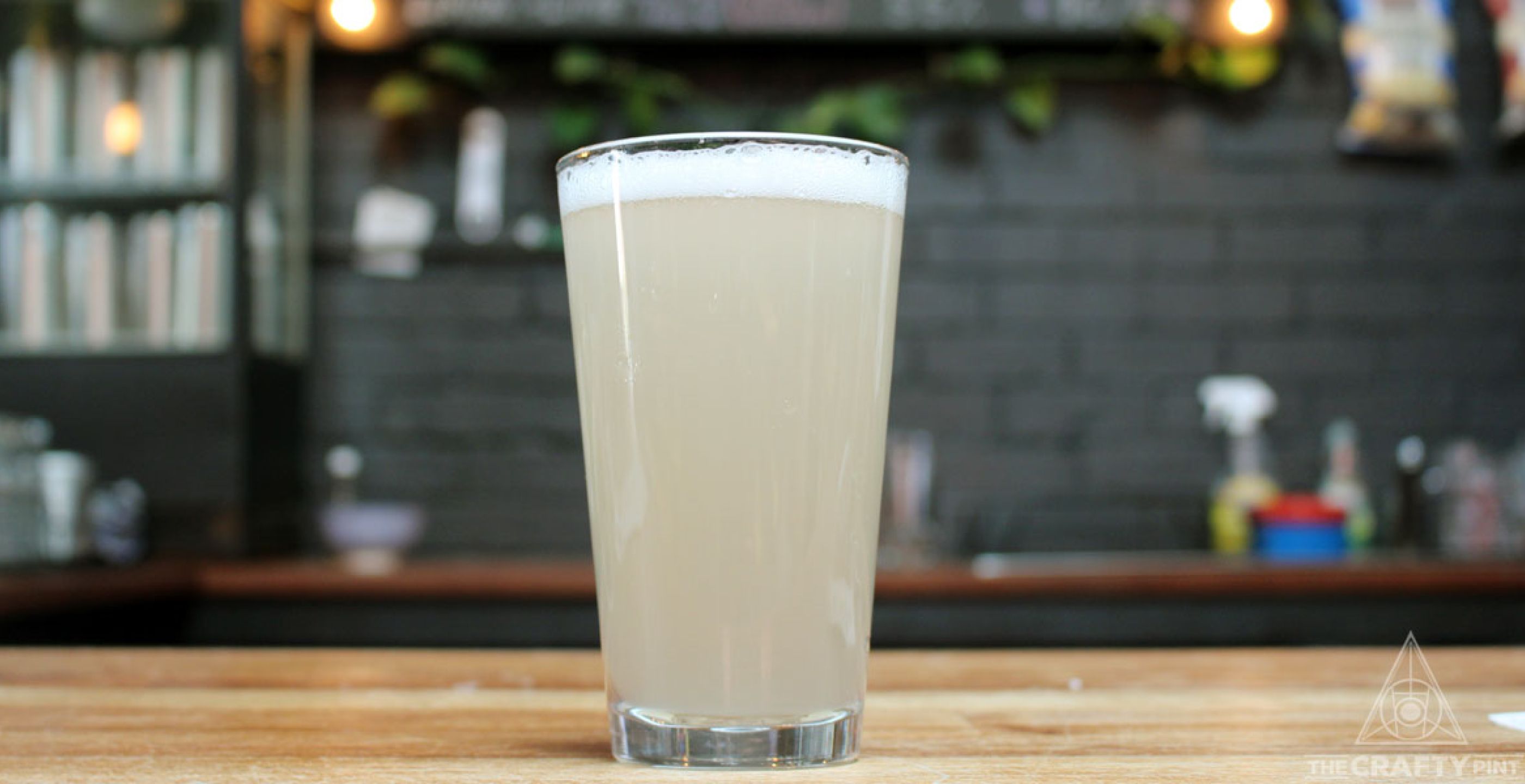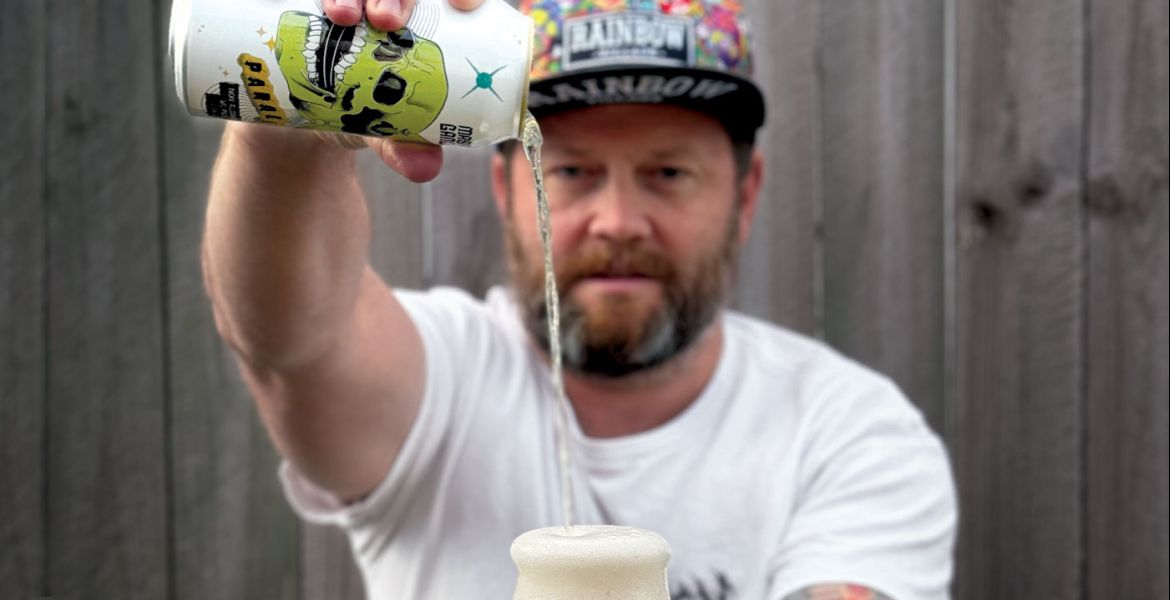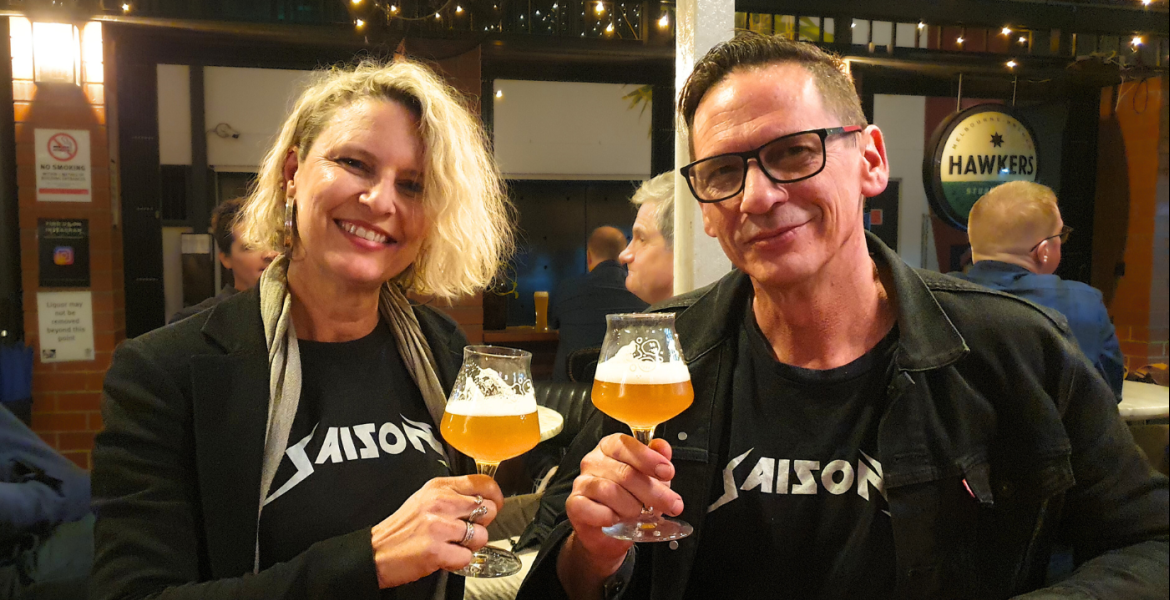Anyone who’s so much as glanced at an American beer news site – or, possibly, any publication dedicated in any way to alcohol – over the past 12 months likely knows hard seltzer is a big deal. It’s being produced by breweries large and small, has come seemingly out of nowhere and, if some doomsayers are to be believed, is the First Horseman heralding the impending end of craft beer as we know it.
What's more, such drinks have started to appear here too; Lion and Coles have released them and a number of smaller breweries have been playing around in that space. So does that mean we'll be welcoming our own Horseman of the Alcopopalypse soon? And just what exactly is it that's creating such fervour and fear Stateside anyway?
Certainly, for a beverage category that's causing such a stir, dominating meme culture and selling out at US retailers, it has to be said seltzers have a wilfully innocuous premise: fizzy, flavoured, boozy water.
Seltz-huh?
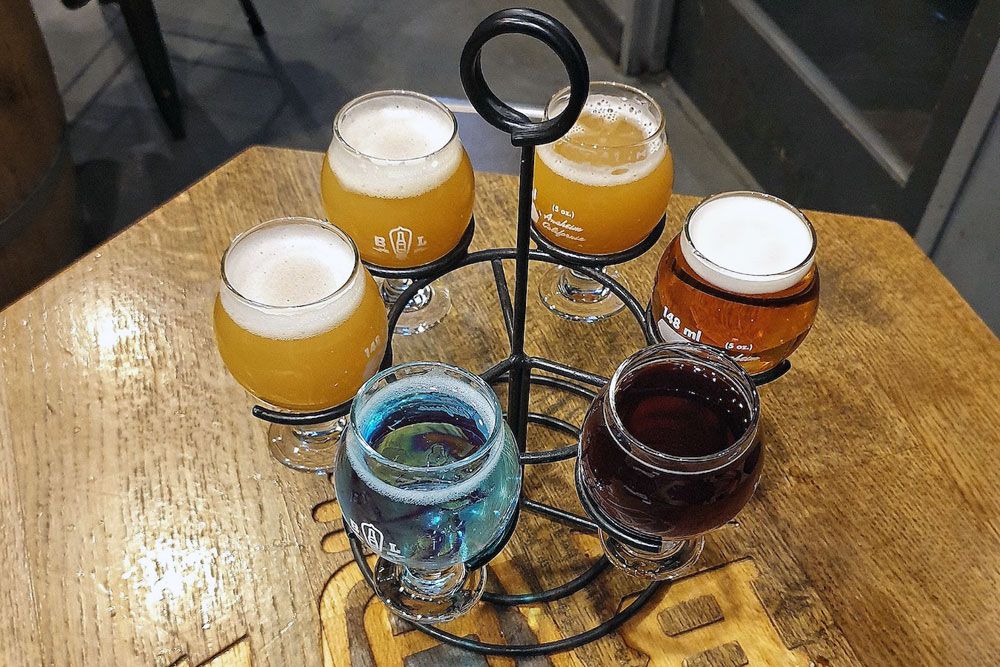
The seltzer name stems from Selters, a spa town in Germany whose naturally effervescent mineral water was exported from the late 1700s. In 1772, Englishman Joseph Priestley released the first paper on the subject, the delightfully named “Direction For Impregnating Water with Fixed Air”, after discovering he could make fizzy water using a bowl of water above a beer vat. Not long afterwards, J.J. Schweppe commercialised the idea, and we suspect you're familiar with the fizzy drinks bearing his name to this day.
In America, the seltzer name grew as a generic term for carbonated water, even featuring in the show about nothing plot line within the show about nothing. The word seltzer was also used in Australia during the 19th century, but walk into a café and asked for one today and few, if any, would know what you wanted. But maybe one day soon that won't be the case for bars.
Hard seltzers or spiked seltzers – in other words, those containing alcohol – have been around for a little while in America too: Coors launched Zima Clearmalt in 1993, although it would be more than a decade before the hard seltzer name spread. Boston brand SpikedSeltzer arrived in 2013 and was bought by Anheuser-Busch just three years later, the same year in which the current category leader, White Claw, made its debut.
Given hard seltzers are easy to drink, are made with a spectrum of flavours similar to those you'd find in a bag of lollies – lime, grapefruit, raspberry, cherry, and so on – and can be the go to option for people in their early drinking years, a comparison is often drawn with alcopops or RTDs. Importantly, however, America’s tax system doesn’t see them as such.
Typically, in very simple terms, fermented sugar is dosed with a small amount of natural juice creating a gluten free, low calorie beverage; but in the US there they are taxed and labelled as beer, thus giving their makers a competitive advantage against spirit-based booze. For example, a White Claw 12-pack would set you back about $20 AUD. In Australia, if brewers can show their seltzers to be a beer, they also manage to avoid the alcopop tax.
Update: Just as in the US, hard seltzers can be made from various bases, including spirits and wine, and not all will Australia will fit the Australian Tax Office's definition of beer. Any drinks maker should contact the ATO directly if they're unsure of where their seltzer might sit.
Truly Clawsome
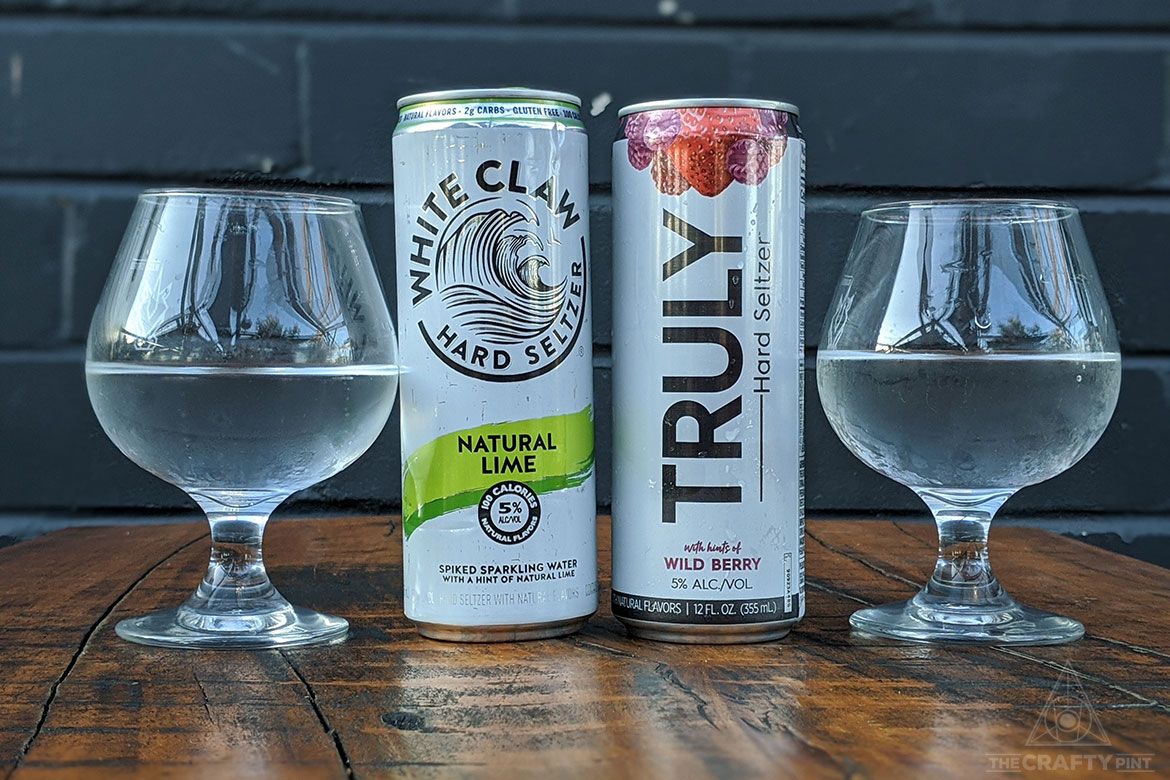
According to this article in Forbes, hard seltzer has grown to account for more than 2.5 percent of the American alcohol market, leading some industry analysts so say it's now big enough to be considered its own drinks category, separate from beer, cider or spirits. Seltzer sales have also been tipped to reach AUD$3.8 billion by next year.
Just two brands control somewhere between 75 and 85 percent of that market too: White Claw and Truly, the second of those owned by Boston Beer Company. Bryan Roth, writing for Good Beer Hunting in July 2019, said the sales tally from those two brands was the equivalent to the combined sales of Sierra Nevada’s and Samuel Adams’ beer portfolios.
White Claw's nine flavours of clear, fizzy, alcoholic water have given rise to countless memes, birthed the phrase “ain’t no laws when you’re drinking claws” and led to an associated “bro culture” parodied in this viral clip by comedian Trevor Wallace. It’s also only been around since 2016, when it was launched by Canadian wine distribution and investment entrepreneur Anthony von Mandl (who has previous with Mike's Hard Lemonade), happens to outsell many of America’s largest breweries, faced a shortage in September last year, and is allocated to retailers to manage demand.
More recently, AB InBev launched Bud Light Seltzer while Constellation Brands’ Corona Hard Seltzer has joined the party too. On the smaller scale, craft breweries have been getting in on the game, with Bryan Roth also exploring a growing battle between “Big Seltzer” and “Craft Seltzer” and how its rise is affecting the craft beer industry:
It may be impossible to figure out where hard seltzer is stealing customers from with complete certainty, but the reality is that they’re coming from somewhere — and that shift is impacting beer makers big and small.
Producers typically focus their marketing on hard seltzer being the healthy option. For example, White Claw cans list "Natural flavours", "2g Carbs", "Gluten Free" and "100 calories"; the last of these is repeated no less than four times on the slender 355ml can. But, as with many new beer styles, it hasn't taken long to move beyond early adopters and into the realms of parody.
New York’s Evil Twin joined the party with Evil Water – a “pastry seltzer” featuring marshmallows – while Four Loko's Hard Seltzer weighs in at 12 percent ABV and comes complete with the tagline: "The hardest seltzer in the universe with a hint of black cherry."
So, what's the appeal? For many, it’s an easy leap to make: beer is bitter and historically marketed to men; wine can be expensive and aloof; spirits are out of the reach or poor quality at affordable price points; but alcoholic soda water? Well, that’s a low stakes leap. Pair the idea with a more health- and Insta-conscious consumer base and it starts to make sense.
Bubbling Up Down Under
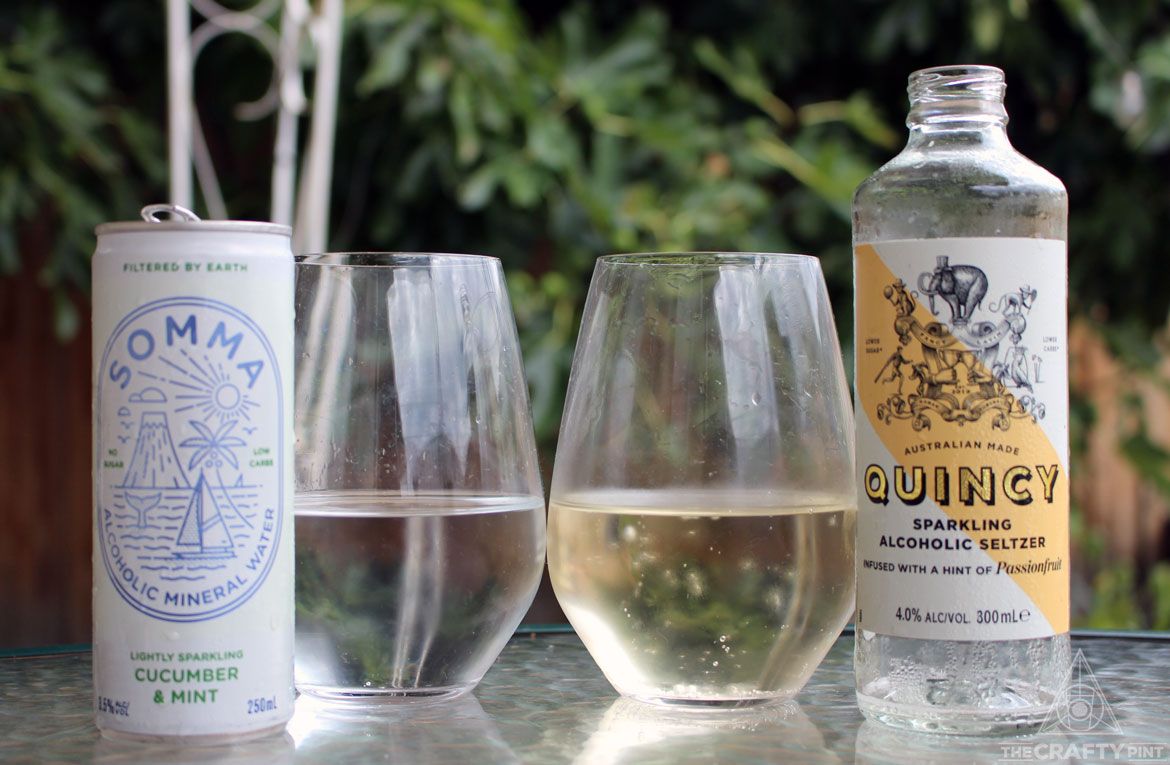
In Australia, two of the first companies to jump aboard the seltzer sleigh were Lion and Coles, with Quincy and Somma respectively. That said, they’re not exactly being given prime real estate, as this writer discovered when he scouring the shelves for both at his nearest major bottleshops.
At the smaller end of the town, Mornington Peninsula-based St Andrews Beach Brewery have launched the Tidal Artesian Seltzer brand, focusing on the drink’s low calorie count. Bundaberg’s Bargara Brewing released Buzz’d Hard Seltzer and Western Australia’s Blasta Brewing and Indian Ocean Brewing are set to join them. The last of those has opted for one featuring cold brew coffee and lime, and fermented with kveik yeast, the Norwegian strain that ferments fast and at relatively high temperatures.
There’s more coming too but, for now at least, they’re a secret…
One person drinking in seltzer’s American success is The Mill Brewery’s founder Mirek Aldridge, who spent time in the US last September. Returning home, he was inspired to try his hand at making his own at the Collingwood brewpub; Hard AF Lemon & Lime Seltzer (pictured at top of article) was released at the end of January.
“They were definitely about,” Mirek says. “Different breweries we went to always had a few different hard seltzer options on tap.”
He says he’s been a bit surprised by their relatively slow take-off in Australia, particularly with seltzers of all shapes and shades gaining prominence in America.
“There’s no one way to do it,” he says. “We used a mix of a champagne yeast and US05 American yeast to give it a nice clean finish but we also used an enzyme which enables it to finish super dry like you would with a Brut IPA.”

The Mill’s Hard AF was also dry-hopped with a "tiny amount” of Cascade and uses dextrose, making it a gluten free option Mirek was able to produce on brewing equipment he already owned. As a brewery that sells the majority of its beer across the brewpub bar and has always been willing to explore new styles or play with unusual additions, Mirek says he was keen to expand their lineup.
“We wanted to offer something that’s a bit nicer on a hot day, or if people are concerned about the sugar content of the beer they’re drinking," he says. "And it’s gluten free.”
Brewing Hard AF hasn't been without its challenges; The Mill’s seltzer would have been a little closer to being the first from an Australian craft brewery but, unhappy with his first try, Mirek decided to start again.
“That was mostly down to not understanding how much additional nutrients and that kind of thing the yeast needed,” he says. “The yeast wasn’t healthy enough and [the seltzer] just didn’t quite get to where we wanted it to and it stalled.”
Botany’s One Drop Brewing explored seltzer late last year as part of their Pilot Party, an event at which eight one-off kegs poured and where punters picked their favourite to be rebrewed. Head brewer Nick Calder-Scholes (pictured below) says their intention to offer a colourful tap list on the day – one that included a Brett IPA and a sour with cucumber, strawberries and lychees – led to a desire to create something that wasn’t beer.
“This party was a whole bunch of stuff we’d been saving up and wanting to do for a long time and wanted to do as one-off, so I felt we should do a different product,” he says.
Like The Mill, Nick used dextrose, citrus in the shape of lime and orange peel, and Citra hop oil to ensure it was “beer-like”. Hard Citrus Seltzer was fermented with kveik yeast, which Nick says left him with a simple ferment.
“That just chomped through it at ambient Australian summer temperate and it was done super quick,” he says.
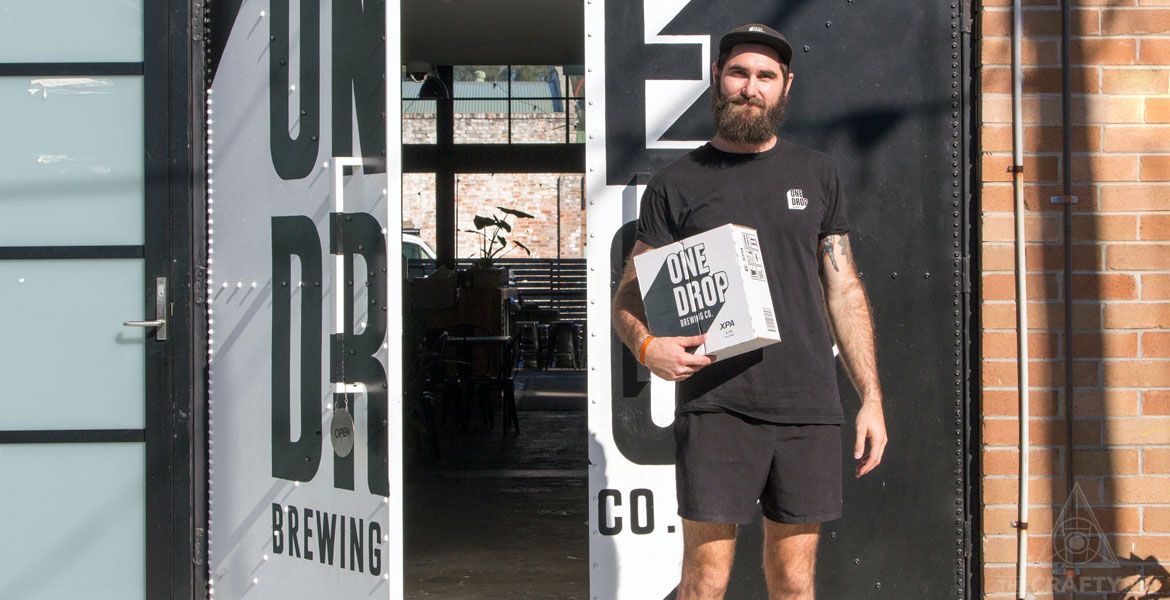
It proved popular too, the second keg to blow after their Mèlange Muscat Sour – an eight percent mixed culture beer – which in its own way seems like a beautiful microcosm of the modern beer world. And while Mèlange’s top spot at the Pilot Party has guaranteed its return, Nick says he’s keen to make another hard seltzer as soon as there’s space in the brew schedule.
At Two Birds, it's not just visitors to The Nest who have been taken by the “brewed alcohol soda” Chirpy – co-founder Jayne Lewis let out an audible gasp on the phone as we chatted for this story.
“I just realised it’s run out and I’m so sad,” she says. “It’s literally been the first thing I’ve been drinking when I’ve come into the bar, so I’ve been digging it.”
Two Birds’ Chirpy uses both barley and rice, so isn’t gluten free but, like those at The Mill and One Drop, it saw the Spotswood brewers look to capture a citrus character via the addition of grapefruit.
“We made a malted beverage as normal with a low hopping rate and then used fruit in different formats to give us that note to go along with it,” Jayne says.
“For me, it’s still a bit craftier and more closely aligned with what we’re good at, which is making beer, so we’re still using some of those techniques.”
Although she hadn't sampled American versions of the drink, she’d been watching seltzer’s rise in America with interest. The distance and unfamiliarity is partially why they chose to call Chirpy a “brewed alcohol soda”, along with the fact she’s not sure Australians even know what a seltzer is.
She also feels the Two Birds name can work well with drinks that aren’t just beer; already, last August, the brewery had introduced cider to their core range.
“I think our brand lends itself to those beer adjacent products as well, so it seems like quite a natural place for our brand to sit,” she says. “We wanted to just dip our toes in the water and see how warm it is in there.”

At The Mill, Mirek says the rise of so many unusual beers means we shouldn’t be surprised to see brewers move into beer-adjacent drinks too.
“My argument is, 'What’s a banana milkshake IPA?',” he says. “How’s that beer compared to [seltzer]?
“There’s beer right in the middle and all these things are both going off to the side and that’s not a bad thing at all. I’m not trying to say this is a beer but it is a great little option to have.”
Mirek adds that craft breweries, particularly in America, often look for ways to expand what they do beyond beer, whether it’s the largest – as is the case with John Boston – or operations that don’t sell anything outside their four walls. Australia is witnessing a similar trend with the likes of the Fermentum family of businesses that includes Stone & Wood, Fixation, Treehouse Cider and Bucha of Byron, or the Good Drinks portfolio featuring Gage Roads, Matso’s, Atomic Beer Project, Hello Sunshine Cider and Alby, not to mention the growing number of brewers with stills.
“I don’t think there’s anything wrong with exploring other types of beverages,” Mirek says. “I’m not about to go and make kombucha or anything but, if I did, would that be so bad?"
At One Drop, Nick sees a well-considered tap list as essential for any brewery eager to connect with their community, something upon which the Botany team prides itself.
“By putting the seltzer on as well then you’re diversifying what is on tap for locals and I think any brewery that’s a taproom needs to be conscious of doing that,” he says. “We don’t have a Belgian tripel on in summer just because it’s not going to move; that doesn’t mean I don’t love that style or love brewing them.”
As for whether or not we'll see the same kind of rise as in the US, Jayne says it often takes a large brand to really break new products into the market so it may be Quincy or Somma that paves the way. On the other hand, they may prove to be a different kind of fizzer, not least because, as she points out, Australia’s brewing industry isn’t tethered to America’s.
“We’ve seen different parts of our industry follow what the US is doing but I don’t think it’s a blind thing.
“I personally don’t foresee [us having] the same growth," she says, "but you’ll probably throw that quote back in my face in twelve months' time.”
Guy Southern contributed to this article.




